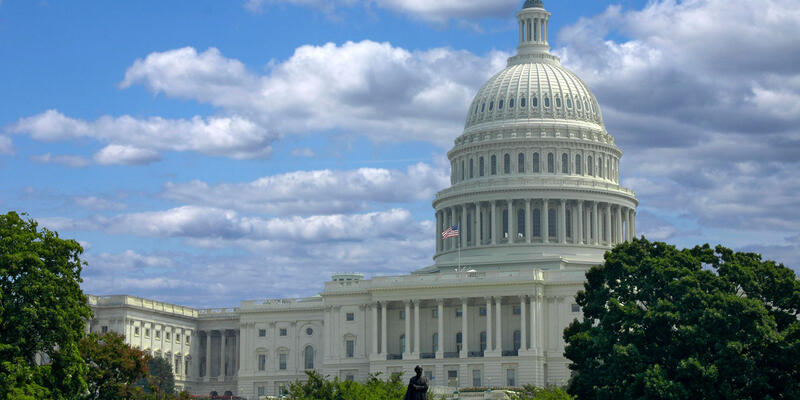
Federal spending on highways (or, synonymously, roads) totaled $52 billion in 2022. Most of those outlays were for grants to state and local governments to support their spending on capital projects. (Those governments typically spend roughly three times as much of their own funds on highways each year, not only on capital projects but also to operate and maintain roads.) That $52 billion also included spending for federal programs that subsidize state and local governments’ borrowing for highway projects; other subsidies for state and local borrowing are provided through the tax code.
Historically, most federal spending for highways has been paid for by revenues—largely from excise taxes on gasoline, diesel, and other motor fuels—that are credited to the highway account of the Highway Trust Fund. For more than two decades, those revenues have fallen short of federal spending on highways, prompting transfers from the Treasury’s general fund to the trust fund to make up the difference.
The Congressional Budget Office projects that balances in both the highway and transit accounts of the Highway Trust Fund will be exhausted in 2028. If the taxes that are currently credited to the trust fund remained in place and if funding for highway and transit programs increased annually at the rate of inflation, the shortfalls accumulated in the Highway Trust Fund’s highway and transit accounts from 2024 to 2033 would total $241 billion, according to CBO’s May 2023 baseline budget projections.1
The current authorization for federal highway programs expires on September 30, 2026. As policymakers consider future reauthorization, they have many decisions to make about federal highway programs, including how much to spend on them, how to direct that spending, and how to pay for those programs.
Federal Spending for Highways
As a share of total economic output, federal spending for highways has been relatively stable for several decades. Almost all federal spending is for capital projects rather than for operation and maintenance and is restricted to federal-aid highways, which consist of the Interstate Highway System and most other roads that are not local roads. Federal highway funds are distributed to states on the basis of formulas that depend on how much states received in earlier years, so federal spending does not necessarily go to the projects that would produce the greatest net benefits.
Lawmakers have many options for determining the amount of money spent on highways, including these:
- Maintain the current conditions and performance of the highway system. Under the Federal Highway Administration’s (FHWA’s) scenario in which federal-aid highways’ conditions and performance are maintained at their 2016 levels, an annual average of $61 billion per year in federal spending would be needed over the 2024–2033 period, CBO estimates. That amount is $4 billion less than the average annual spending in CBO’s 10-year baseline projections.
- Fund all projects for which the expected benefits meet or exceed the costs. Under FHWA’s scenario in which projects are funded according to that criterion, an average of $99 billion per year in federal spending would be needed over the 2024–2033 period, CBO estimates. That estimate, which reflects the assumption that state and local governments increased their spending for federal-aid highways proportionally, is about $34 billion more than the average annual amount in CBO’s 10-year baseline projections.
Revenues Credited to the Highway Trust Fund
The Highway Trust Fund has two accounts—one for highways and the other for mass transit—to which certain fuel and other vehicle-related excise tax collections are credited. In CBO’s May 2023 baseline projections, revenues credited to the Highway Trust Fund in 2024 total $47 billion, and outlays from the fund in that year exceed those revenues by about $18 billion.
Policymakers have a number of options to increase the resources available in the Highway Trust Fund:
- Increase the existing fuel taxes. The tax on gasoline has been 18.4 cents per gallon, and the tax on diesel fuel 24.4 cents per gallon, since October 1993. Increasing those taxes by 15 cents per gallon in January 2024 would raise $250 billion more in revenues for the Highway Trust Fund over the 2024–2033 period than projected in CBO’s May baseline. An increase of that amount would eliminate the fund’s shortfall. However, the increase in fuel taxes would reduce taxable business and individual income, resulting in $62 billion of reductions in income and payroll tax receipts that would partially offset the increase in fuel tax receipts.
- Institute new taxes or fees. Policymakers could institute new taxes or fees, such as taxes on vehicle miles traveled (VMT) or a tax or fee on electric vehicles (EVs). One option would be to impose a VMT tax on commercial trucks. CBO has estimated, using data from 2022, that if such a tax was applied to all commercial trucks on all roads and all the practical steps necessary to implement it were taken, each cent of the tax would generate $3 billion per year. The federal government’s costs of implementing such a tax and ensuring compliance could, however, be substantial. Another option, an annual tax on EVs, would probably not have a substantial effect on the trust fund’s shortfall over the next 10 years because such vehicles are projected to make up a relatively small portion of the total stock of vehicles.
- Transfer money from the Treasury’s general fund. Under this option, the federal government would, in effect, pay for a portion of highway spending in the same way that it funds other programs and activities.
Originally published at https://www.cbo.gov/publication/59634



